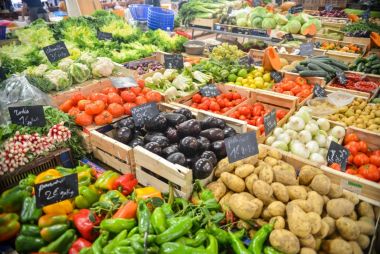Taste and See: How meals in the Bible teach us about God

Meals in the Bible are one of the principle ways in which we understand the Kingdom of God.
Food is used time and again throughout Scripture as a means of showing God's interactions with people.
Think about one of the very first stories we hear in Genesis – the fall. The means used by the serpent to tempt Adam and Eve was a fruit: "When the Woman saw that the tree looked like good eating and realised what she would get out of it – she'd know everything! – she took and ate the fruit and then gave some to her husband, and he ate."
After the fall, the rest of the Hebrew Bible tells the story of God's plan to rescue His people from the consequences of their sin. It's no surprise that one of the main ways that He shows this is when they are being delivered out of slavery in Egypt.
Exodus 12 contains very specific instructions about the food that was to be eaten as the Passover meal. "You are to eat the meat, roasted in the fire, that night, along with bread, made without yeast, and bitter herbs. Don't eat any of it raw or boiled in water; make sure it's roasted... And here is how you are to eat it: Be fully dressed with your sandals on and your stick in your hand. Eat in a hurry; it's the Passover to God."
This meal that the children of Israel eat as they were about to be freed became in Judaism the main motif by which God's saving power was to be understood.
Ever since, Jewish people around the world have marked the Passover meal. It's one of the central acts of Jewish memorial and worship – and it was what the disciples and everyone else in Jerusalem was marking in the week that Jesus entered the gates riding on a donkey.
As Jesus and the 12 gather together to eat and celebrate the Passover together, he is preparing to remodel this most important meal.
In 1 Corinthians 11 Paul says "that the Lord Jesus on the night when he was betrayed took a loaf of bread." He goes on to describe how Jesus reconfigured the Passover Meal. "When he had given thanks, he broke it and said, 'This is my body that is for you. Do this in remembrance of me.' In the same way he took the cup also, after supper, saying, 'This cup is the new covenant in my blood. Do this, as often as you drink it, in remembrance of me.' For as often as you eat this bread and drink the cup, you proclaim the Lord's death until he comes."
Here is a meal doing more than just being used as a motif. Jesus institutes the Communion meal as a means of experiencing the ultimate act of salvation. Theologican Paula Gooder writes: "Jesus re-explained and reinterpreted the significance of the bread and wine in this new Passover commemoration."
She carries on: "The last supper reminds us that God is once more leading his people out of slavery and into freedom, a freedom that is achieved this time, not by the death of the firstborn sons of others, but by the death of his own, most beloved son... Every time we commemorate the last supper, we look backwards to Jesus' death and forwards to the Messianic banquet and that action of remembering, of making present what is past and what is to come, transform the present."
If the last supper is the paradigmatic meal of the Christian faith, there are other meals in the New Testament with significance. When Jesus appears to his disciples after his resurrection, he eats with them. After his appearance on the Road to Emmaus, he breaks bread with his companions.
We read in Revelation 3 words of affirmation, written to the church in Laodicea: "Look! I stand at the door and knock. If you hear my voice and open the door, I will come in, and we will share a meal together as friends."
Then that closing book of the Bible comes to a climax in Chapter 22, in a mirror of Genesis: "On each side of the river grew a tree of life, bearing twelve crops of fruit, with a fresh crop each month."
As many of us will sit down for meals with friends and family this weekend, let us be reminded of God's call to sit and eat with Him.











